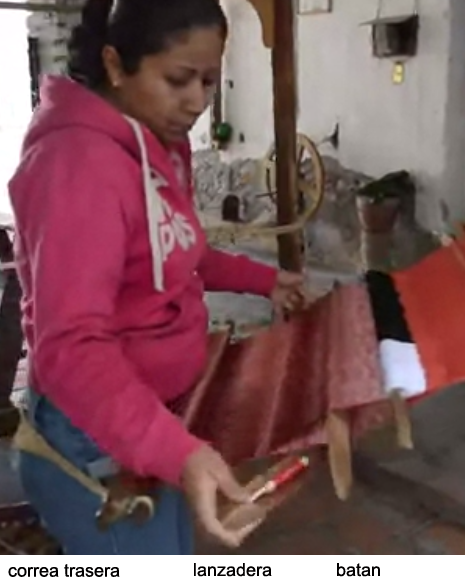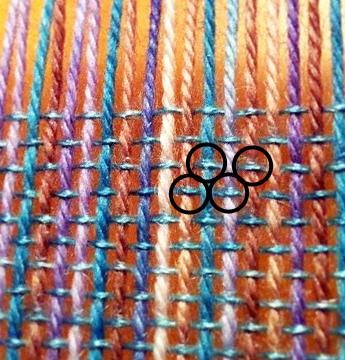Background 2
Algorithmic Designs

This woman is weaving a silk rebozo on a backstrap loom at the Taller Escuela de Rebocería in Santa Maria del Rio, San Luis Potosi, Mexico. When she leans forward, the vertical threads are loosened. That allows her to rotate the flat board (“batan”) and create a gap where the horizontal thread spool (“lanzadera”) can be moved across.

This means that unlike the beads, which sit on the Cartesian grid intersections, the weave stitches alternate every other space. We can say they are 180 degrees out of phase, if we think of each row as a waveform.

You might recall that in your bead algorithms, we could simply “stamp” the bead image. To simulate loom weaving, we had to make a new code block we call “shift and stamp” to take into account the out of phase patterns.